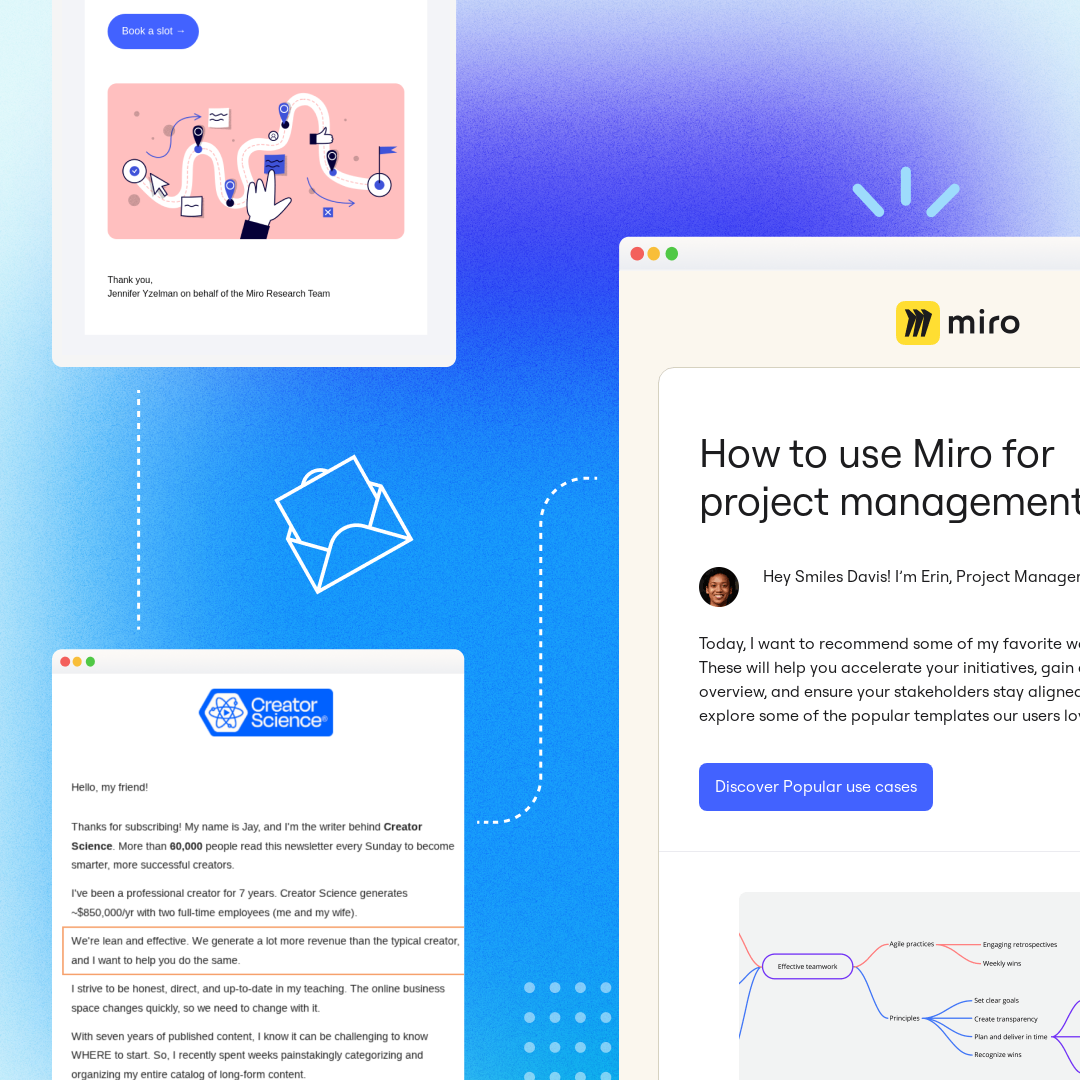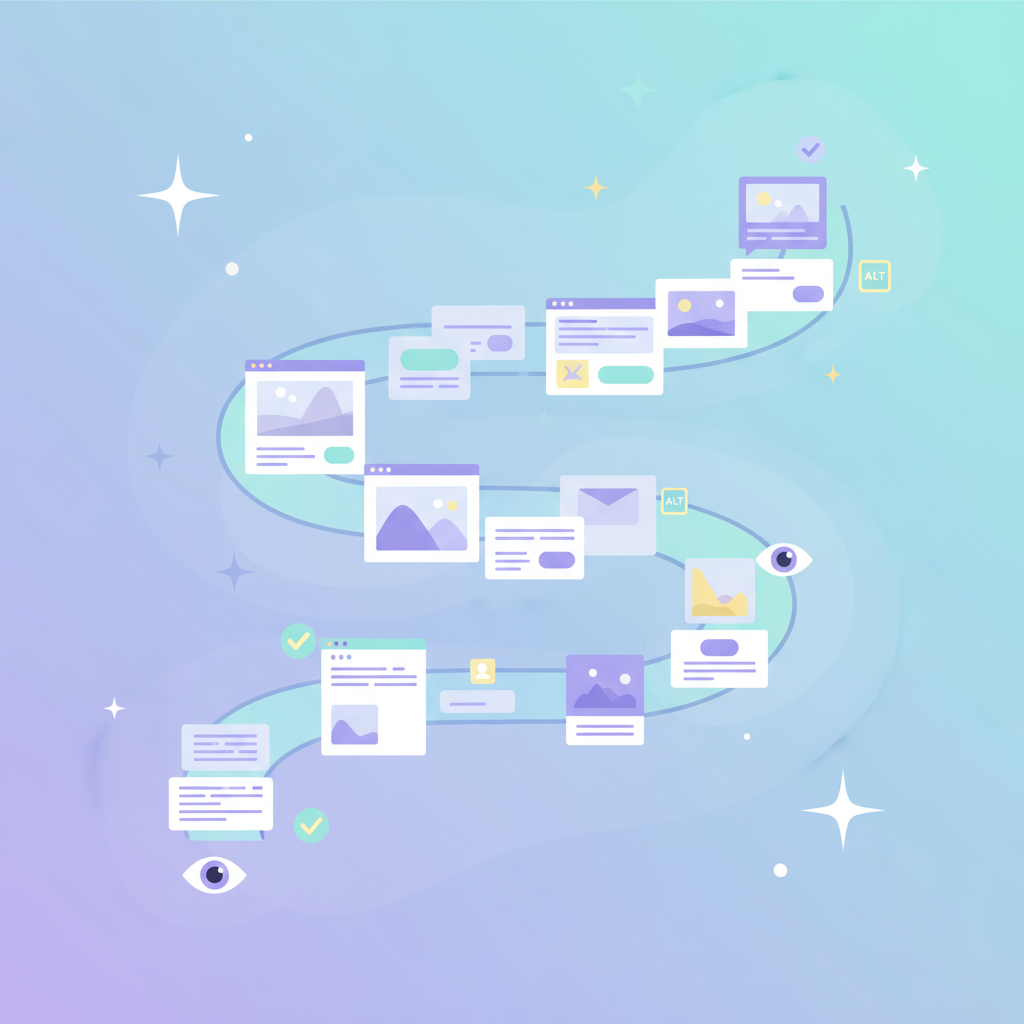
How do you feel when someone gives you a heartfelt “thank you” message? Most likely, you feel pleased, happy and valued. When someone tells you thanks, that makes you feel important. And that’s why it’s so essential for brands to say thank you to their customers.According to the stats, thank you emails pay off big. With a 42% open rate and 14% CTR, one study showed that emails created to say "thank you!" are twice as effective as traditional marketing emails!Thank you emails make your customers feel valued. That strengthens your customer relationships, helping to ensure your customers will keep coming back to your brand long-term.Let’s take a look at some thank you email best practices that can help you craft your messages.
Thank you emails make your customers feel valued. That strengthens your customer relationships, ensuring your customers will keep coming back again and again.
When do you send thank you emails?
Any type of email can become a thank you email. Welcome emails, purchase confirmation messages, survey requests and more can all turn into the perfect opportunity to add a little gratitude. Personalizing these messages can make them sound particularly heartfelt, even if your thank you emails are actually automated.Let’s talk about a few specific times you can send thank you emails and what those emails should look like when you do:
#1. Include a coupon code
What better way to say thanks than a coupon code or an exclusive discount? Coupons are highly popular among consumers: 60% of customers enjoy receiving digital coupons, while 68% feel that coupons help produce brand loyalty. Allergy-conscious food brand So Delicious recognizes the power of sharing coupons and includes a $1 off coupon in its “Thanks for signing up” message, hooking the reader by mentioning the discount in the subject line. Try doing something similar to strengthen your customer relationships.Subject line: Save $1 on So Delicious as thanks for signing up

#2. Create a sense of exclusivity
When someone signs up for your newsletter or makes a purchase, send them a thank you message that makes them feel as if they’re now part of an exclusive group. This snazzy email from Converse confirms that customers are now part of the family and notes all the benefits consumers will receive. The primary message? Converse is glad you’re here.Subject line: Thank you for creating an account.


#3. Add a strong CTA
For some thank you emails, it’s most appropriate to simply express your gratitude without making an explicit ask. But in other cases, you might want to find ways to upsell your customers by including a solid CTA. In this welcome email, David’s Bridal uses a sparkly white-and-rose color scheme to thank customers for signing up. The company also includes two strong CTAs to get customers onto their website — a “Shop Now” button to go with a discount code that arrives via text, and a “Book Virtual Appointment” button to schedule a meeting with a stylist.Subject line: Hey there! Thanks for signing up!

#4. Thank customers for their feedback
Customer feedback is hugely important for your business. Consumers are more likely to trust a brand that has lots of reviews. And if those reviews are good, they’re more likely to buy. So when you receive feedback, don’t forget to say thanks! When a customer reviews a product on Amazon, for example, Amazon sends a simple message with a copy of the review and a couple of sentences thanking the customer by name.Subject line: Thank you for reviewing Come Matter Here: Your Invitation to Be Here in a Getting There World on Amazon

#5. Say thanks in sensitive situations
When times are tough — whether for your company in particular, or for everyone — it's a good time to remember to be grateful. J. Crew recently crafted this simple thank you email in the wake of COVID-19, expressing thanks to its customers for being part of the J. Crew family. There’s always a reason to thank your customers. And when you express your genuine appreciation, your customers will be more likely to stick by your side — even during hard times.Subject line: A thank-you from our CEO

#6. Automate your thank you emails
Once you’ve decided when to send thank you emails, you can set up these messages to send automatically. With welcome emails, post-purchase emails and event emails, for example, it’s easy to identify a specific action that should trigger the sending of an email. (Pictured here: Our Thank You For Your Purchase email template by designer Navid Nosrati.)

Wrap-up: 'Thank you for your purchase' email template
Ready to design your thank you emails? You don’t need to start from scratch — use our thank you email templates to get started. In our template catalog you will find over 1,000 professionally designed email templates, on this and lots of other topics. All the emails are responsive and can be edited for free with our friendly email builder.

Thank You email templates
Share this post with your friends! Pin it on Pinterest ?




